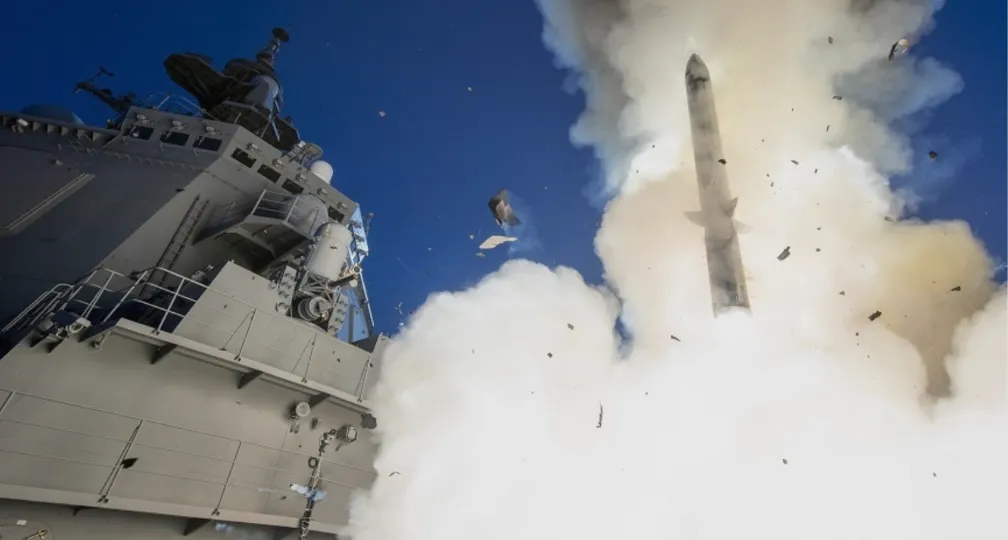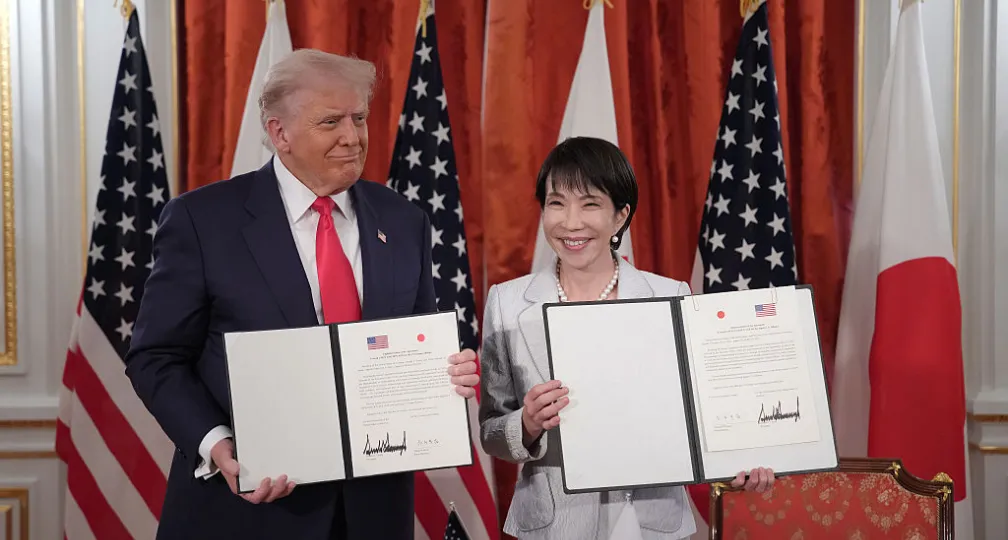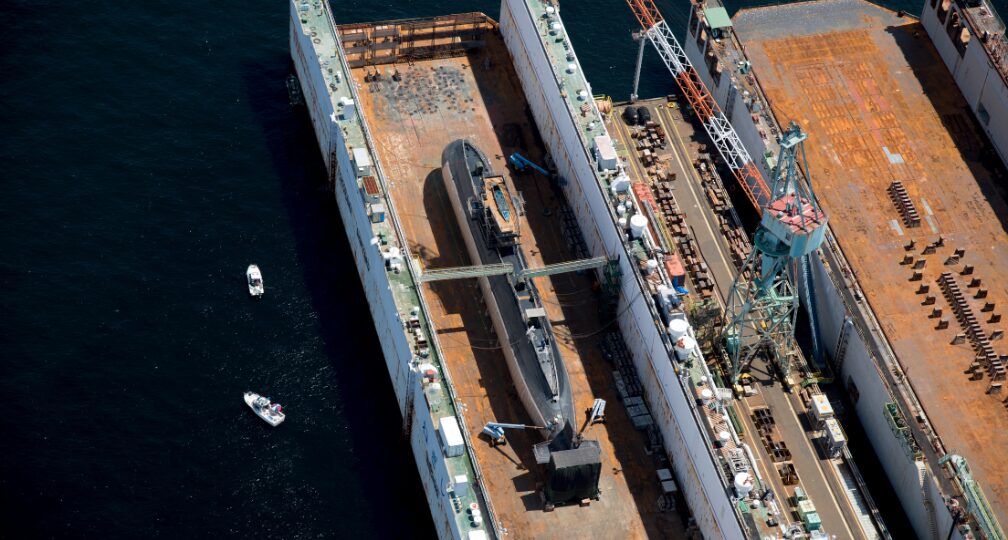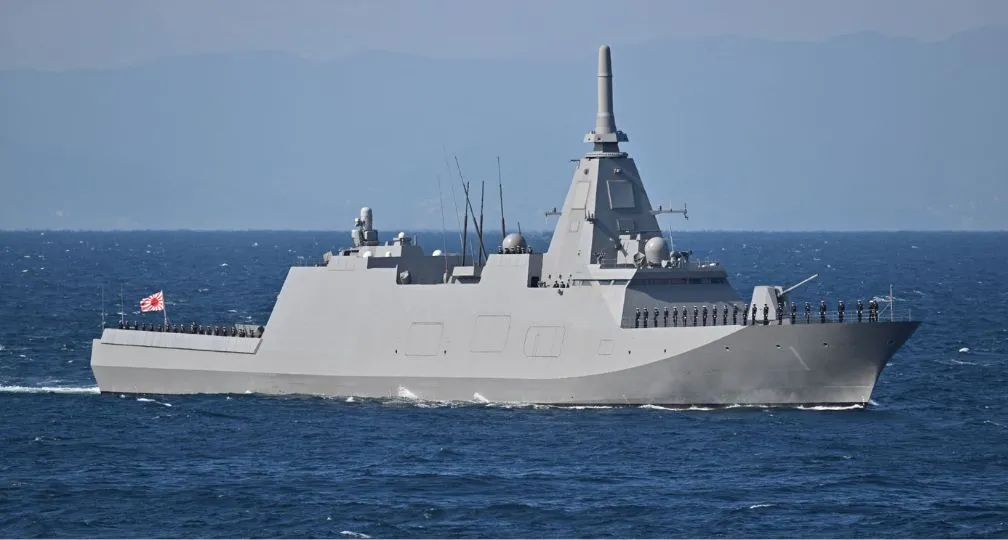Why building an effective Japan-U.S. kill chain will enhance defense

Although the importance of the two defense pillars may not be noticeable on a daily basis, every time we receive a J-Alert on our phones about North Korea testing a ballistic missile, for instance, the alert sequence is initiated from the U.S. military’s early warning satellites detecting the heat source of the missile. This information is then relayed to the SDF, which alerts the public and engage the incoming threat should it become necessary.
Without political and strategic cooperation between the two governments, as well as operational, tactical and technological interoperability established between their militaries, Japan would be unable to implement such a system. In the event of an emergency, the significance of Japan-U.S. interoperability is only amplified.
Security cooperation and interoperability will become more important in the coming years for the alliance. This is due to not only the growing threat from China, but also the changing nature of warfare.
‘Cross Domain Operation’
The conflict in Ukraine has demonstrated that modern warfare necessitates advanced coordination of operations that encompass land, sea, air, space, cyber, electromagnetic and cognitive domains. It also involves the extensive use of unmanned systems. By combining various domains and weapons, militaries are aiming to cover the vulnerabilities of each weapon and are seeking synergetic effects to take advantage of adversaries’ weak points.
Modern wars originate from the Second Offset — a strategy devised by the U.S. Defense Department in the late 1970s to actively utilize information technology for military purposes — and the so-called revolution in military affairs and network-centric warfare that spread in the 1990s.
Today, many militaries around the world have adopted and applied these concepts. The widespread availability of dual-use technologies, including satellites, large-capacity data transmission and artificial intelligence (AI), has empowered these forces to effectively engage in modern warfare.
The Self Defense-Forces have also benefited from this trend. Since the early 2000s, Japan has integrated information technologies into its systems and utilized them in operations, such as ballistic missile defense. This effort was further strengthened by operational studies conducted to prepare for a contingency over the Senkaku Islands since 2012, leading to the development of the “Cross Domain Operation” concept.
Cross Domain Operation aims to connect a vast range of equipment in different domains, including land, sea, air, space, cyber and electromagnetic, to create a synergetic effect.
This involves gathering information from satellites and sensors located across multiple domains, which is then transmitted in real time to command posts and units via a resilient network. With the help of AI, information is then analyzed and evaluated to allow for quicker and more precise decision making, allowing commanders to engage the enemy by using the most effective and appropriate kinetic or nonkinetic methods.
Building a kill chain
To conduct any military operations, a “kill chain” must first be established. This process involves a sequence of actions consisting of detecting, identifying and tracking targets; transmitting the information quickly; selecting and implementing appropriate measures; and analyzing and assessing the achievements. As for Cross Domain Operation, the SDF needs to develop a kill chain that is capable of utilizing assets across multiple domains.
Naturally, any military will try to sever the enemy’s kill chain by disrupting or destroying any piece of the chain with kinetic attacks such as missiles or with nonkinetic means such as jamming or cyberattacks.
The SDF is working to improve and strengthen its kill chain, but there is still a long way to go. To improve detection, a mix of microsatellites, ground-based radars and unmanned aerial vehicles becomes necessary. For information transmission, multiple routes should be secured through different frequency bands, including the communication satellites of allies and those in commercial use. And to engage the enemy, missiles launched from various land, sea and air platforms become essential.
Thus, to maintain the kill chain, the SDF needs to acquire a significant amount of equipment for multiple domains that can provide similar or complementary capabilities. Japan also needs to enhance its interoperability among its assets and connect them regardless of domain.
Developing a kill chain for Cross Domain Operation involves more than just ensuring interoperability among each branch of the SDF. It also requires establishing a higher level of interoperability with the U.S. military. Creating a joint Japan-U.S. kill chain can help optimize resource allocation and bolster resilience.
Achieving interoperability
Since World War II, the significance of interoperability in communication between services and allies has been recognized as a critical feature for conducting effective operations.
For more than half a century, each service created its own communication networks based on specific requirements as a result of varying operational tempos, distances and scales. For example, there was no need to connect infantry and tanks that fight ground battles at relatively short distances to the same network as destroyers, which fight underwater, surface and air threats in the open sea. Such integration could, on the contrary, weaken the troops’ overall performance.
While partial optimization of networks was acceptable in the past, this feature has become a significant challenge when building an integrated network suitable for modern warfare.
To solve this dilemma, a new meta-network is required to allow interoperability while preserving the existing networks. If that is the case, Japan does not necessarily have to create a new network or adopt a network completely identical to that of the U.S. military to achieve the interoperability needed for cross-domain operations.
The goal is not the introduction of identical networks, but gaining interoperability to the same network while making use of the unique defense equipment that matches geographical features and national circumstances.
Overcoming interoperability challenges
Innovative approaches will be needed to create a structure that can maintain networks optimized for individual domains while increasing interoperability. Joint development programs and initiatives are crucial for the SDF to break through path-dependent thinking and organizational stove-piped structures.
The U.S. military’s Joint All Domain Command and Control (JADC2) is an excellent example of such efforts. Under the guidance of the Department of Defense and Joint Chiefs of Staff, the army, navy and air force are implementing this concept through their own projects. JADC2 uses an open architecture-based approach to incorporate existing systems as well as standardizing data transmission by utilizing AI and developing nodes that connect different networks.
Since the beginning of this year, the U.S. military, along with the British and Australian armed forces, have been conducting repeated experiments utilizing networks based on the JADC2 concept. Their goal is to establish a high level of interoperability with the systems of other allies. Starting next year, the U.S. military plans to expand its cooperation to some of its European partners.
Japan’s option
Japan is not far behind in making such efforts. It has already begun joint research and development to enhance command and control system-related interoperability with its American counterparts. The Defense Ministry announced that the two countries would jointly design, build and test the Mission Partner Gateway Extended (MPGW-X) starting in 2020.
Although progress has been made, Japan must take additional measures. A program similar to JADC2, which provides a cohesive approach to connecting individual assets, should be implemented. Additionally, Tokyo and Washington should develop a strategy to improve interoperability and acknowledge it as a key component of force development.
The three security-related strategic documents approved by the Kishida Cabinet last December include command and control functions as one of the seven capabilities to be strengthened within the next five to 10 years. Today, as networks with high-level interoperability are needed more than ever, it is essential to see substantial progress in such projects.
(Photo Credit: Japan Maritime Self-Defense Force)

Geoeconomic Briefing
Geoeconomic Briefing is a series featuring researchers at the IOG focused on Japan’s challenges in that field. It also provides analyses of the state of the world and trade risks, as well as technological and industrial structures (Editor-in-chief: Dr. Kazuto Suzuki, Director, Institute of Geoeconomics (IOG); Professor, The University of Tokyo).
Disclaimer: The opinions expressed in Geoeconomic Briefing do not necessarily reflect those of the International House of Japan, Asia Pacific Initiative (API), the Institute of Geoeconomics (IOG) or any other organizations to which the author belongs.


Research Associate
Rintaro Inoue is a Research Associate at the Asia Pacific Initiative (API) & the Institute of Geoeconomics (IOG), the International House of Japan (IHJ), a Tokyo-based global think-tank, where he focuses on U.S. security policy, the U.S.-Australia alliance, Japanese defense policy, and economic statecraft including defense industrial base policy. Prior to assuming his current position, he joined the Asia Pacific Initiative (API) as an intern and contributed to multiple projects including the Japan-U.S. Military Statesmen Forum (MSF). He is currently researching defense industrial policies of other countries in the International Security Order Group. He received his BA and MA in law from Keio University and is now a PhD student.
View Profile-
 India’s Geoeconomic Options in a Trumpian World2025.11.04
India’s Geoeconomic Options in a Trumpian World2025.11.04 -
 Can Takaichi Build on a Successful Summit?2025.10.31
Can Takaichi Build on a Successful Summit?2025.10.31 -
 The Geoeconomics of Generative AI Development Race: How Emerging Technologies Can Become National Power2025.10.27
The Geoeconomics of Generative AI Development Race: How Emerging Technologies Can Become National Power2025.10.27 -
 From Decline to Surge: The Defense Industry in the Era of Excess Demand (Executive Summary)2025.10.24
From Decline to Surge: The Defense Industry in the Era of Excess Demand (Executive Summary)2025.10.24 -
 Hungary’s Electoral System: Constructing a System Favorable to the Governing Party and Its Future Prospects2025.10.20
Hungary’s Electoral System: Constructing a System Favorable to the Governing Party and Its Future Prospects2025.10.20
 What Comes Next after the Supreme Court Rules on IEEPA?2025.10.02
What Comes Next after the Supreme Court Rules on IEEPA?2025.10.02 A Looming Crisis in U.S. Science and Technology: The Case of NASA’s Science Budget2025.10.08
A Looming Crisis in U.S. Science and Technology: The Case of NASA’s Science Budget2025.10.08 US-China Misperceptions in the Race for Strategic Autonomy2025.10.17
US-China Misperceptions in the Race for Strategic Autonomy2025.10.17 Trump and America’s tech giants: Coexistence or collaboration?2025.10.03
Trump and America’s tech giants: Coexistence or collaboration?2025.10.03 Trump’s Tariff Policy through a Geoeconomic Perspective2025.10.10
Trump’s Tariff Policy through a Geoeconomic Perspective2025.10.10















